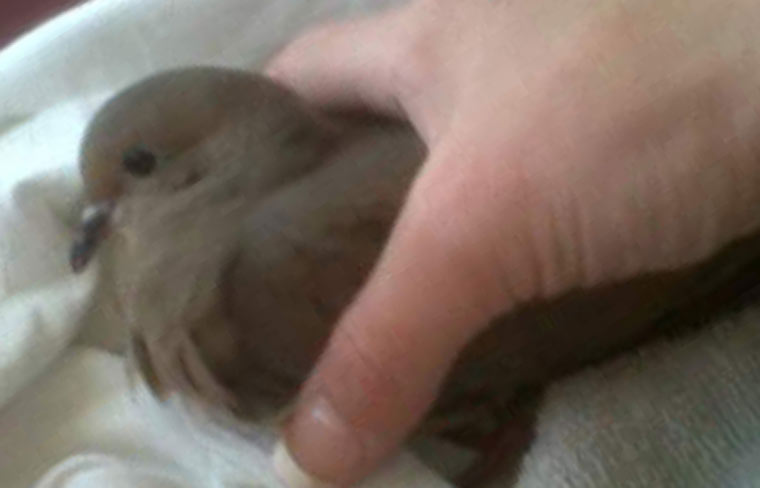-
info@aaanimalcontrol.com
Call us for help in your town
Humane Wildlife Education
Are repellents effective in getting a wild animal out of the chimney?
Need wildlife removal in your hometown? We service over 500 USA locations! Click here to hire us in your town and check prices - updated for year 2020.
Repellents are often sold as a way to get rid of animals from your home, but the truth is, they only deal with half the problem. When you’ve successfully “repelled” that animal, what happens next? Do you know what to do next? Do you know that repellents rarely work at all?

Take motion sensor lights in the back yard as a classic example. They don’t work well to keep animals out of your yard at all. In fact, all those lights do is annoy the hell out of you and your neighbor while you're trying to get some sleep. The raccoons will still come and rummage through your garbage can. Stray cats and dogs will still take whatever has been left over. Squirrels will still come flocking to your bird feeder. Bats will still be drawn to the relative safety of your attic.
Repellents only deal with the tiniest part of the problem — the animal itself. They don’t deal with the entire problem.
You need to seal holes in your home, and repair the damage that these creatures have left in their wake. This means replacing wooden beams and foundations, if they have become damaged, and in the cases of dens and burrows that have been created beneath a home or outbuilding, the repairs can be extensive, time-consuming, and rather costly. These dens and burrows could seriously mess around with the structural safety of that building.
Rats and mice can chew through electrical cables, and these will need to be repaired by an electrician, unless you don't mind flickering lights and plug sockets that only work sixty percent of the time. The repellents won’t seal holes or repair damage. In fact, using repellents alone will actually contribute to more damage. Because you have not sealed the holes, or removed the animal effectively, it will be back, it'll bring its friends along, and the lot of them will do more damage to your home than you ever thought possible. Sadly, this isn't a worst-case scenario. It's a situation that many homeowners find themselves faced with, after using repellents and deterrents, time and time again. That's generally the point at which we -- licensed wildlife removal experts — are called in. It probably would have been cheaper and easier to hire us from the start!
Aside from that, lights and noise machines probably won't be that effective in a space like your chimney. Your house will be quite noisy as it is, so if noises drove these critters away, they’d have been long gone by now. Lights don't really work that well either, something we have already touched upon. Wildlife removal fluid, or eviction fluid, can work, and is probably the best one of a bad bunch, but still it's effectiveness is yet to be proven. In many cases, these deterrents for wild animals don't work at all. We don't ever advise that you buy them.
The chimney is quite a small and confined space in your home, and by using deterrents and repellents, you will generally have one of two outcomes. The animal will either a) leave the space in which you are trying to evict it from, but move in to different space, one that will be even harder for you to reach, or b) ignore the repellent entirely and go about its day like nothing ever happened.
These outcomes are generally NOT what most homeowners are looking for.
Dealing with a wild animal in the chimney is a long process, and it involves a whole load more than just getting rid o the creature itself. You will need to make sure the animal you’re trying to get rid of isn't a mother, because if she is, there’s going to be a nest of babies somewhere. If that's the case, you’ll need to find and remove the babies too, and then you’ll need to deal with the mess.
If you don’t seal entry points, the animals will just come right back. If you can’t find the entry points, you haven’t finished your job yet. You may need to install covers on your chimney to make sure the problem doesn’t come back, but if you already have covers installed, there’s another place allowing them access. You’ll need to find this and then seal it.
After all of those things can you then go ahead and clean up, not just after yourself, but also after the animal. You’ll need a great deal of protective clothing for this. A bottle of bleach and rubber gloves are not going to be effective. There are several serious diseases that you will want to desperately avoid when dealing with the feces and urine of wild animals, and even nesting material and attic insulation can be contaminated. This means you will need to destroy virtually everything this animal as come into contact with, if you can't clean it with a biological enzyme cleaner. The strongest cleaners are generally not made available to the general public, which means the wildlife removal experts really are the right people for the job.
For more information, you may want to click on one of these guides that I wrote:
How To Guide: Who should I hire? - What questions to ask, to look for, who NOT to hire.
How To Guide: do it yourself! - Advice on saving money by doing wildlife removal yourself.
Guide: How much does wildlife removal cost? - Analysis of wildlife control prices.
animals in the attic
noises in the attic


















